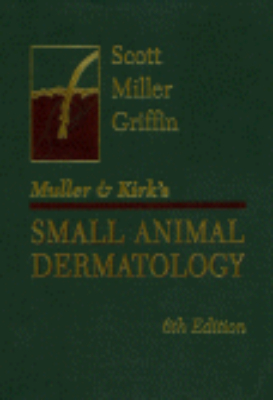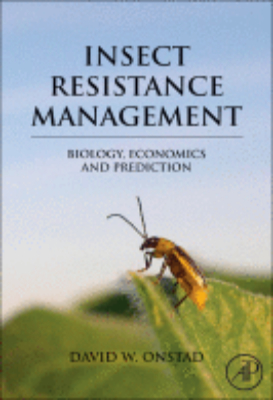Muller & Kirk’s Small Animal Dermatology
Fully revised and updated, Muller & Kirk’s Small Animal Dermatologyprovides students and veterinarians the most complete, up-to-date and user-friendly textbook of dermatology for dogs, cats, and pocket pets. This popular resource thoroughly details everything concerning etiology, pathogenesis, clinical signs, diagnosis, and therapy. Lavishly illustrated with clinical, microscopic and histopathological materials, it features over 1200 illustrations.
| Publication Language |
English |
|---|---|
| Publication Access Type |
Premium |
| Publication Author |
* |
| Publisher |
Elsevier |
| Publication Year |
* |
| Publication Type |
ebooks |
| ISBN/ISSN |
* |
| Publication Category |
Animal Science |
Kindly Login to ICAR Digital Library Portal.
Related products
Agricultural Sustainability
Collaboratively written by top international experts and established scientists in various fields of agricultural research, this book focuses on the state of food production and sustainability; the problems with degradation of valuable sources of land, water, and air and their effects on food crops; the increasing demand of food resources; and the challenges of food security worldwide. The book provides cutting edge scientific tools and methods of research as well as solid background information that is accessible for those who have a strong interest in agricultural research and development and want to learn more on the challenges facing the global agricultural production systems.
Genetically Modified Plants
"A transgenic organism is a plant, animal, bacterium, or other living organism that has had a foreign gene added to it by means of genetic engineering. Transgenic plants can arise by natural movement of genes between species, by cross-pollination based hybridization between different plant species (which is a common event in flowering plant evolution), or by laboratory manipulations by artificial insertion of genes from another species. Methods used in traditional breeding that generate transgenic plants by non-recombinant methods are widely familiar to professional plant scientists, and serve important roles in securing a sustainable future for agriculture by protecting crops from pest and helping land and water to be used more efficiently. There is worldwide interest in the biosafety issues related to transgenic crops because of issues such as increased pesticide use, increased crop and weed resistance to pesticides, gene flow to related plant species, negative effects on nontarget organisms, and reduced crop and ecosystem diversity. This book is intended to provide the basic information for a wide range of people involved in the release of transgenic crops. These will include scientists and researchers in the initial stage of developing transgenic products, industrialists, and decision makers. It will be of particular interest to plant scientists taking up biotechnological approaches to agricultural improvement for developing nations. Key Features. Discusses traditional and future technology for genetic modification. Compares conventional non-GM approaches and genetic modification. Presents a risk assessment methodology for GM techniques. Details mitigation techniques for human and environmental effects"
Insect Pests of Potato
"Insect Pests of Potato: Biology and Management provides a comprehensive source of up-to-date scientific information on the biology and management of insects attacking potato crops, with an international and expert cast of contributors providing its contents. This book presents a complete review of the scientific literature from the considerable research effort over the last 15 years, providing the necessary background information to the subject of studying the biology management of insect pests of potatoes, assessment of recent scientific advances, and a list of further readings. This comprehensive review will be of great benefit to a variety of scientists involved in potato research and production, as well as to those facing similar issues in other crop systems. Key Features. Written by top experts in the field, this is the only publication covering the biology, ecology and management of all major potato pests. Emphasizes ecological and evolutionary approaches to pest management. Summarizes information from hard-to-get publications in China, India, and Russia"
Insect Resistance Management: 2007
Insects, mites, and ticks have a long history of evolving resistance to pesticides, host-plant resistance, crop rotation, pathogens, and parasitoids. Insect resistance management (IRM) is the scientific approach to preventing or delaying pest evolution and its negative impacts on agriculture, public health, and veterinary issues. This book provides entomologists, pest management practitioners, developers of new technologies, and regulators with information about the many kinds of pest resistance including behavioral and phenological resistance. Abstract concepts and various case studies provide the reader with the biological and economic knowledge required to manage resistance. No other source has the breadth of coverage of this book: genomics to economics, transgenic insecticidal crops, insecticides, and other pest management tactics such as crop rotation. Dr. David W. Onstad and a team of experts illustrate how IRM becomes efficient, effective and socially acceptable when local, social and economic aspects of the system are considered. Historical lessons are highlighted with new perspectives emphasized, so that future research and management may be informed by past experience, but not constrained by it.
Postharvest Handling: 1993
"Postharvest Handling: A Systems Approach introduces a new concept in the handling of fresh fruits and vegetable. Traditional treatments have been either physiologically based with an emphasis on biological tissue or technologically based with an emphasis on storage and handling. This book integrates all processes from production practices through consumer consumption with an emphasis on understanding market forces and providing fresh product that meets consumer expectations. Postharvest physiologists and technologists across the disciplines of agricultural economics, agricultural engineering, food science and horticulture along with handlers of minially-processed products within the fresh produce fruit and vegetable processing industries will find this to be an invaluable source of information. Key Features
Resource Structure of Agriculture
Resource Structure of Agriculture: An Economic Analysis focuses on the quantitative economic analysis of the agricultural industry. The book first discusses the theory of resource demand. Topics include decision milieu in agriculture; aggregate demand for an input; and notes on the statistical estimation of the demand function for an input. The text also examines the role of labor in agriculture, including agricultural wages, migration from agriculture, and regional labor supply. The monograph underscores the use of machineries in the agricultural sector. Analysis of post-war demand for power and machinery; early developments in agricultural mechanization; trends in the use of other machinery; and supply conditions for agricultural machinery are discussed. The text also looks at the use of fertilizers and pesticides in the agricultural sector, as well the need to invest in farm buildings. The book examines the demand for resources and supply of agricultural products. Future pattern of resource use and technological change; interactions between demands for different resources; and resource demand and a derived supply elasticity are discussed. The text is a valuable source of data for readers interested in the economic analysis of the agricultural industry.
Securing Safe Water Supplies
Available water disinfection systems rely mainly on large-scale filtration and the combination of filtration (to remove solids), and subsequent application of chemical disinfectants. This has proven to produce water of acceptable quality. Important points for application in household systems are low complexity, few training requirements, and easy transportation and distribution as well as a sufficiently high acceptance by the user. Written and endorsed by the European Federation of Food Science and Technology this book compares a variety of purification systems. There is a growing evidence base on targeting water quality improvements to maximize health benefits, and it is believed that 4% of the global disease burden could be prevented by improving water supply, sanitation, and hygiene. Better tools and procedures to improve and protect drinking-water quality at the community and urban level, for example, through Water Safety Plans include the availability of simple and inexpensive approaches to treat and safely store water at the household-level.
Soil Organic Matter: Second Edition 1966
Soil Organic Matter: Its Nature, Its Role in Soil Formation and in Soil Fertility focuses on the contributions of soil organic matter in soil formation and fertility, including weathering, decomposition, and synthesis of humus substances. The publication first elaborates on the main stages in the history of soil humus study and ideas on the composition of soil organic matter and nature of humus substances. Discussions focus on organic substances of individual nature, strictly humus substances in soil organic matter, and humus substances as a complex of high molecular- weight compounds. The text then examines the biochemistry of humus formation, including the role of physical, chemical, and biological factors, origin of humus substances, possible participation of lignin in the formation of humus substances, and the role of oxidizing enzymes in the synthesis of humus substances. The manuscript takes a look at the importance of organic matter in soil formation and soil fertility and the natural factors of humus formation. Topics include the role of organic matter in the weathering and decomposition of soil minerals; role of organic matter in the formation of soil structure; effect of organic matter on the growth and development of plants; and influence of chemical and physicochemical soil properties on humus formation. The publication is a dependable source material for readers interested in the influence of soil organic matter in soil formation and fertility.
The Role of Water in Agriculture
The Role of Water in Agriculture focuses on the role of water in British agriculture. This book discusses the growing importance of hydrological science and agricultural hydrology. Organized into 14 chapters, this book begins with an overview of the problems of accurate rainfall measurement and its importance to agriculture. This text then presents a comprehensive study of the sources of error in agricultural water budgets. Other chapters consider the progress reports on two catchment studies and a report on the effect of agricultural treatments on water availability in the soil. This book discusses as well the sediment yields from forested and agricultural lands on an international basis. The final chapter deals with a summary of the discussions with conclusions and implications. This book is a valuable resource for hydrologists, geographers, meteorologists, agricultural scientists, applied biologists, plant physiologists, and pedologists. Engineers, administrators, and advisers will also find this book useful.
The Science of Grapevines: Anatomy and Physiology
Written by a recognized expert and based on his experience in teaching the subject to students with a variety of educational backgrounds, The Science of Grapevines: Anatomy and Physiology is the only book to comprehensively explore the physiology of the grapevine as it occurs around the world.While other books have focused on the vines of specific regions, the globalization of the wine industry and the resulting increase of lands around the world being used for grapevine cultivation have left a gap in information. This book addresses not only the specific issues and concerns of grapevines from regions around the world, but includes important emerging topics such as global climate change, water relations, temperature effect and more. Key Features * Provides global coverage of grapevines, including the regional differences, similarities, challenges and potential changes* Avoids jargon while bringing the reader into this important aspect of the wine industry * Classroom proven by a leading expert in grapevine anatomy











